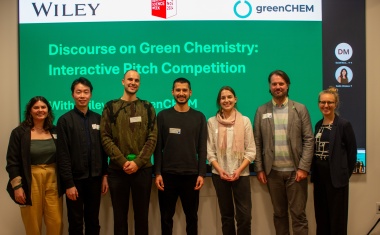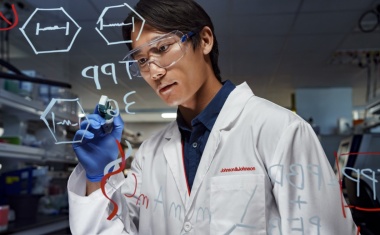AstraZeneca Tries New Tack in Brain Research
AstraZeneca has clinched two new deals in neuroscience, underlining the drugmaker's increasing reliance on external projects to refill a sparse pipeline as it tests a new low-cost approach to drug research.
Britain's second-biggest pharmaceutical company said on Thursday it had bought a portfolio of early-stage experimental compounds for Alzheimer's, Parkinson's and other brain diseases for an undisclosed sum from privately owned U.S. biotech company Link Medicine.
It has also signed a deal with leading U.S. academic scientists to study variations in a gene called apolipoprotein E4, or ApoE, that is known to increase Alzheimer's risk.
The deals followed a decision by AstraZeneca in February to slash its inhouse neuroscience research staff to around 40 from more than 800, creating instead a "virtual" research unit for brain disorders. The first deal with the new unit was signed with Axerion, another unlisted biotech firm, in May.
Faced with a dismal record on productivity as sales of older products decline, AstraZeneca has pruned its overall research and development (R&D) budget and changed the way it approaches the hunt for new medicines.
Discovery head Mene Pangalos told reporters on Thursday that mistakes had been in the past by encouraging quantity over quality in early drug selection.
"If you looked at our output in terms of numbers of candidates entering the clinic, we were one of the most productive companies in the world, dollar for dollar. If you rated us by how many drugs we launched, we were one the least successful," he said.
That poor track record contributed to the early departure of former CEO David Brennan on June 1, even as the Anglo-Swedish group stepped up a programme of rationalisation.
AstraZeneca has shed 23% of its R&D jobs and the management team has also been overhauled, with 60% of the top 50 R&D executives hired over the last 2-1/2 years.
Work in progress
"It's a work in progress. It's going to take some years for it to manifest itself, hopefully, in terms of successful Phase III starts and successful launches," Pangalos said.
The target is to move between eight and 11 experimental medicines into the final Phase III stage of clinical testing over the next three years.
The decision to make neuroscience a virtual Innovative Medicines Unit, or iMed, could "inform" other therapy areas, but Pangalos said it was not likely to be replicated in areas where AstraZeneca has more solid and promising assets, like oncology.
Neuroscience, by contrast, is a high-risk area of research for many drug companies. AstraZeneca itself suffered a major setback in March with the failure of a new antidepressant being developed with Targacept Resources.
In a bid to address its thin new drug pipeline, which is currently insufficient to offset the loss of sales from old drugs going off patent, AstraZeneca has also stepped up its acquisitions of biotech companies in recent months.
Two weeks ago it agreed to chip in $3.4 billion for a half share in diabetes medicines developed by Amylin Pharmaceuticals, in partnership with Bristol-Myers Squibb . That followed a deal in April to buy Ardea BioSciences for $1.3 billion.
Simon Lowth, the company's interim chief executive, said on June 30 he saw scope pursue further such acquisitions.
For investors, buying in medicines to bolster the pipeline and the new budget-conscious approach to R&D both make sense. But AstraZeneca, in the words of analysts at Deutsche Bank, will remain a "show me" story until its new drugs start to deliver.








